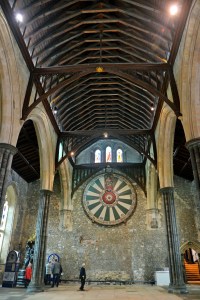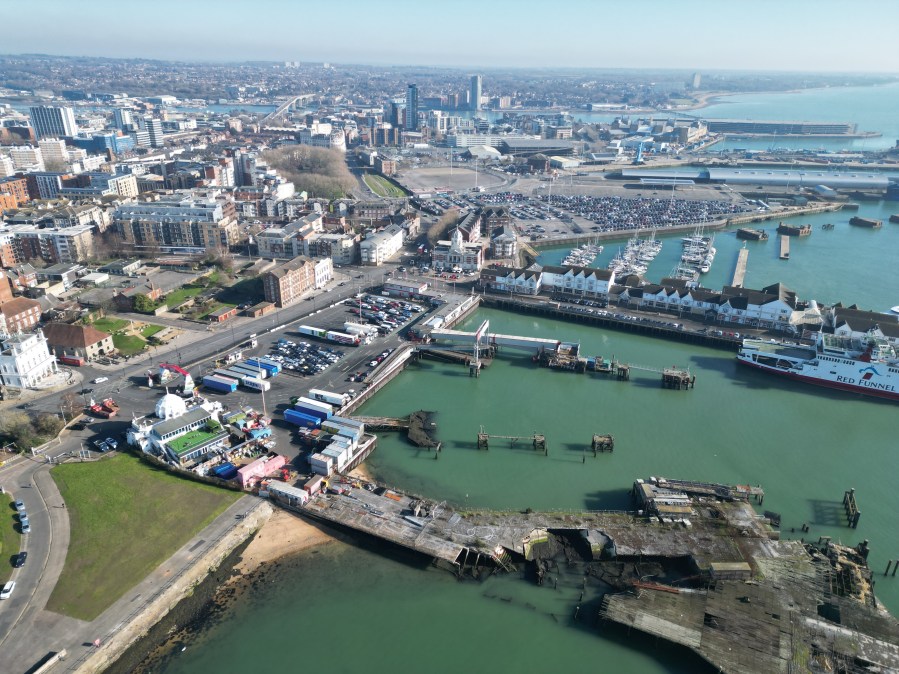Susie Kearley enjoys an action-packed and memorable time in a dynamic city by the coast, as she shares why you should visit Southampton…
Southampton is packed with culture, history, and places to dine. The Sea City Museum is a top attraction with a fantastic Titanic exhibition. On a gloomy day, we head inside and begin a journey through the exhibits, learning about the lives of the people on board.
The people of Southampton were very enthusiastic about the luxury cruise liner before it sailed. They were keen to take advantage of the job opportunities it presented. Many of the crew came from Southampton and surrounding areas. Most of them perished when it sank.
Inside the exhibition, we see recreated cabins, feed the coal-fired boilers, and we try Morse code. There’s a simulator of the bridge, so my husband has a go at steering the ship through choppy waters.
The ship’s food stores included 40,000 eggs and 4,500 kilos of sugar. There was a huge amount of food and crockery on board to keep the passengers fed for the journey. We hear stories from people who lived through the experience and survived, with videos and audios. Some of the stories are very moving, especially when children were separated from their parents and never saw them again.
Further along, we see a cinematic recreation of the court case that followed the disaster. We find out what happened, hear survivors’ accounts of events, and the catalogue of errors and mistakes that led to the sinking. It’s shocking.

Other galleries in the Sea City Museum look at the maritime history of Southampton, from prehistoric times, through to Anglo-Saxon, Roman, Tudor and Victorian times. There’s a display about the Second World War, a Victorian arcade, a cafe and a shop.
The Art Gallery next door contains an interesting mix of old medieval paintings, modern art, surrealist artwork and sculptures. We take a look around. It’s free!
In the countryside beyond Southampton, Netley Abbey stands tall. This medieval monastery for Cistercian monks was founded in 1239. Today it’s owned by English Heritage and a remarkable amount of it survives. We walk through the ruins, and see the Abbot’s House and Hall where he entertained guests.
The Abbey was dissolved by King Henry VIII and became a private residence. In 1704, the house was demolished by Sir Berkeley Lucy, so he could sell the building materials. A local builder was killed by falling masonry as he tried to dismantle the church. The site was then abandoned and left to decay.
We visit the Royal Victoria Country Park, home to the Royal Victoria Hospital between 1863 until 1966. The old Military Hospital was demolished after floods and fires made it unsafe, but the hospital church still stands.
Today it’s a museum, full of interesting curiosities, Victorian medical treatments, and information about the lunatic asylum. They treated traumatised soldiers there using electric shock therapy. Some of the old treatment methods might make you squirm. It’s an interesting place to visit with nice parkland.

We visit nearby Uppark a wonderful stately home, which was gutted by fire in 1989, and was restored over the course of the next six years. The fire took hold after a workman accidentally set fire to wood shavings while using his blow torch. The simmering embers went unnoticed, but turned into a full blown fire which spread through the house, leaving only a burnt out shell.
The contractor’s insurance covered the £24m bill for restoring the property. Today, you can see how it looked before the fire. Old skills were relearned and rekindled to recreate the 18th century interiors, using authentic techniques that were once used by master craftsmen. Some of the items from inside the house were saved and any original items that could be used in the restoration work were used again. That included fragments of wallpaper, upon which replica wallpapers were created.
We head back into Southampton to visit the Solent Sky Museum. It surpasses our expectations. The museum was built specifically to house a decommissioned flying boat, originally built in 1943 as a military-specification Sunderland.
It was later transformed into the civilian Sandringham flying boat, taking passengers around the world. However the running costs became uneconomical compared to traditional aircraft, so when flying became more popular, the flying boat was decommissioned.
Visitors today see a range of different aircraft, both military and civilian. Some are prototypes, which never went into production because of design flaws.
There’s a space suit from Apollo 17 – the last time astronauts went to the moon – and a fascinating exhibition about the Southampton Blitz. There was once a Spitfire factory operating in Southampton, and there’s a display about that too. We learn lots about the history of aviation in the UK, and there’s an impressive collection of model planes that will appeal to collectors.
We head inside the huge flying boat – it’s one of the highlights. A member of staff takes us into the cockpit, where he tells us about the history of the planes. Nowhere else are visitors allowed inside the cockpit of this type of plane, and it really makes it a memorable experience.
The exhibitions cover three floors, and on the top floor is the Hampshire Police Constabulary and Fire Service Museum, where you can see a remarkable collection of artefacts relating to the history of policing and fire-fighting, from different styles of fire extinguishers, to Victorian painted truncheons.
Dine in style
There are plenty of wonderful places to eat in the city and beyond. Top rated restaurants include The Real Greek for a bit of Greek culture, Carluccio’s Italian restaurant, and The Cowherds Pizzeria.
If you like traditional American fayre you might enjoy Ed’s Diner or Blues Smokehouse.
If you prefer fine dining, take a look at the New Place Hotel, which looks good for anyone seeking somewhere a bit special. The Boathouse Hotel and Restaurant at Hythe Marina Village also looks tempting.
Back in time
Little Woodham is a 17th century village in Gosport, which has re-enactment days.
Visit the Inn where a typical 17th century lunch is served to the actors playing characters from the past. The weaver is busy making fabric on a traditional loom. The blacksmith is fanning his coal fire, making metal hooks. One lady makes lavender bags, another is a seamstress, another is knitting. There’s a potter, sawyer, peddler, and scribe. They’re all chatty.
It’s all very interactive and they like visitors to ask lots of questions.
Not far away…

We visit nearby Winchester to see The Great Hall – originally part of Winchester Castle. Inside is a 13th century replica of King Arthur’s Round Table. For centuries people thought it was the original, until carbon dating revealed it dated to 1290 and was used for King Edward I’s banquet for his daughter.
King Henry VIII commissioned an artist to repaint it, asking him include a figure of King Arthur, who looked like King Henry himself. Henry liked to think he was a descendant of the Arthurian king.
At the other end of town, Winchester City Mill is Britain’s oldest watermill, belonging to the National Trust. Videos show a family of otters coming and going from their nest in the building. You can learn about the history, the restoration, and buy some flour.
It’s also worth visiting Wolvesey Castle the former home of the Bishop of Winchester, and Winchester Cathedral, where you can see Jane Austen’s tomb, alongside various ancient kings. City Museum, Winchester, is a small museum with a Victorian Gallery, a Middle Ages Gallery and a Roman Gallery.







